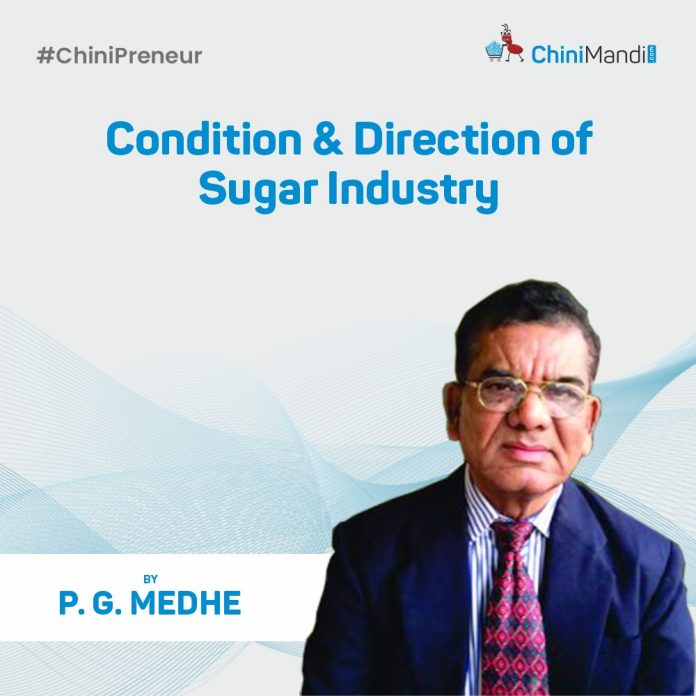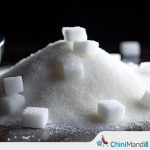In pursuit of operational excellence and continuous improvement, in sugar factories endeavors to establish standardized processes and protocols across all departments. These Standard Operating Procedures (SOPs) aim to streamline operations, enhance efficiency, ensure compliance with regulatory standards, and prioritize safety in every aspect of our operations. By documenting and adhering to these SOPs, we seek to optimize resource utilization, minimize downtime, and uphold the highest standards of quality in sugar production. Through collaboration, feedback, and diligent implementation, we commit to fostering a culture of excellence and reliability throughout our organization.
IMPORTANCE OF SOPs…
Standard Operating Procedures (SOPs) are crucial for every section of a sugar factory to enhance productivity. They provide clear guidelines for tasks, ensuring consistency, efficiency, and safety. In a sugar factory, SOPs help streamline processes in areas like harvesting, processing, quality control, maintenance, and safety protocols. They ensure that every step is carried out correctly, minimizing errors and downtime, ultimately boosting productivity and maximizing output.
SOP FOR ADMINISTRATIVE DEPARTMENT
When drafting SOP for the Administration department of a sugar factory, consider these tips:
1) Outline Processes: Clearly outline all administrative processes from handling documents to managing personnel.
2) Detail Responsibilities: Define each role within the administration department and their specific responsibilities.
3) Include Procedures: Describe step-by-step procedures for tasks such as record-keeping, inventory management, and employee onboarding.
4) Emphasize Safety Protocols: Highlight safety protocols for handling sensitive documents, machinery, and chemicals.
5) Ensure Clarity: Use clear and concise language to avoid ambiguity in instructions and procedures.
6) Provide Training Guidelines: Include guidelines for training new employees and ongoing professional development for existing staff.
7) Address Contingencies: Include procedures for handling emergencies, such as accidents or equipment malfunctions.
8) Review and Update Regularly: SOPs should be reviewed periodically to ensure they reflect current practices and are updated as needed.
9) Seek Feedback: Involve relevant stakeholders in the drafting process to ensure the SOPs are comprehensive and practical.
10) Compliance with Regulations: Ensure that all procedures outlined in the SOPs comply with relevant industry regulations and standards.
HR DEPARTMENT
Here are some tips for preparing a strong Statement of Purpose (SOP) for the HR department of a sugar factory:
1) Understand the Industry: Research the sugar industry, its challenges, and HR best practices specific to this sector.
2) Company Research: Learn about the sugar factory you’re applying to. Understand its mission, values, culture, and any specific HR challenges or initiatives it might have.
3) Identify HR Objectives: Clearly outline your understanding of the HR goals and objectives within the sugar factory context. This could include recruitment, employee engagement, training, safety, and compliance.
4) Highlight Relevant Experience: Showcase your experience and skills that are directly applicable to HR functions within a sugar factory. This could involve experience in agricultural or manufacturing settings, dealing with labor unions, or managing seasonal workforce fluctuations.
5) Emphasize Problem-Solving Abilities: HR in a sugar factory may face unique challenges such as seasonal labor demands, safety concerns, or regulatory compliance issues. Demonstrate how your problem-solving skills can address these challenges effectively.
6) Discuss Compliance and Regulations: Show your understanding of the regulatory environment specific to the sugar industry, such as safety regulations, labor laws, and environmental standards. Highlight any experience you have in ensuring compliance with these regulations.
7) Emphasize Communication Skills: Effective communication is crucial in HR roles. Highlight your ability to communicate clearly and effectively with diverse stakeholders, including factory workers, management, and external agencies.
8) Demonstrate Teamwork and Collaboration: HR in a sugar factory often involves working closely with various departments and teams. Provide examples of how you have collaborated with others to achieve common goals.
9) Tailor Your SOP: Customize your SOP for the specific role and company you’re applying to. Use language and examples that resonate with the sugar industry and the particular culture of the factory.
10) Proofread and Edit: Ensure your SOP is well-written, free of errors, and professionally formatted. Ask for feedback from colleagues or mentors to ensure it effectively communicates your qualifications and motivations.
By following these tips, you can create a compelling SOP that demonstrates your suitability for the HR department of a sugar factory.
Tips for preparation of SOP for marketing department of the sugar factory
Here are some tips for preparing a Statement of Purpose (SOP) for the marketing department of a sugar factory:
1) Understand Your Audience: Know who will be reading your SOP and tailor your language and content accordingly. For example, if it’s for potential investors, focus on business objectives and financial goals.
2) Highlight Industry Knowledge: Showcase your understanding of the sugar industry, including market trends, challenges, and opportunities. This demonstrates your expertise and credibility.
3) Emphasize Marketing Strategies: Outline your proposed marketing strategies, including branding, advertising, promotions, and distribution channels. Show how these strategies align with the company’s goals and target market.
4) Provide Clear Objectives: Clearly state the objectives of the marketing department and how they contribute to the overall success of the sugar factory. This helps to set expectations and measure performance.
5) Include Success Stories: Share examples of past successful marketing campaigns or initiatives you’ve been involved in, highlighting results and impact.
6) Address Challenges and Solutions: Acknowledge any potential challenges facing the marketing department and propose viable solutions. This demonstrates proactive thinking and problem-solving skills.
7) Show Team Collaboration: Highlight how the marketing department collaborates with other departments, such as production, finance, and sales, to achieve common goals.
8) Be Concise and Professional: Keep your SOP clear, concise, and professional. Avoid unnecessary jargon and focus on providing relevant information that showcases your qualifications and expertise.
9) Proofread Carefully: Ensure your SOP is free of grammatical errors and typos. It’s also helpful to have someone else review it for clarity and coherence.
10) Customize for the Company: Tailor your SOP to the specific needs and culture of the sugar factory you’re applying to. Research the company’s values, mission, and current marketing initiatives to align your SOP accordingly.
By following these tips, you can create a compelling SOP that effectively communicates your qualifications and vision for the marketing department of a sugar factory.
Tips for the draft of SOP for the Watch and Ward/ Security department of the sugar factory
When drafting your SOP for the Watch and Ward/Security department of the sugar factory, consider these tips:
1) Introduction: Start with an overview of the department’s role and its importance in ensuring the safety and security of the sugar factory premises, personnel, and assets.
2) Scope: Define the scope of the SOP, including the areas it covers, such as access control, perimeter security, surveillance, incident response, etc.
3) Roles and Responsibilities: Clearly outline the roles and responsibilities of each member of the security team, including supervisors, guards, and support staff.
4) Security Procedures: Detail the specific security procedures to be followed, such as patrols, monitoring of CCTV cameras, access control protocols, and visitor management procedures.
5) Emergency Response Plan: Include protocols for handling emergencies such as fires, accidents, intrusions, or other security threats. Outline steps for notifying authorities, evacuating personnel, and managing the situation.
6) Training and Development : Highlight the training programs provided to security personnel to ensure they are equipped with the necessary skills and knowledge to handle their duties effectively.
7) Equipment and Technology: Describe the equipment and technology utilized for security purposes, such as surveillance cameras, access control systems, alarms, etc. Include procedures for maintenance and troubleshooting.
8) Communication Protocols: Establish communication protocols for the security team, including methods of reporting incidents, coordinating responses, and communicating with other departments or external agencies.
9) Compliance and Regulations: Ensure that the SOP complies with relevant laws, regulations, and industry standards pertaining to security and safety in industrial settings.
10) Review and Revision: Specify a process for regularly reviewing and updating the SOP to reflect changes in technology, regulations, or the operational environment.
11) Quality Assurance: Implement measures to ensure the effectiveness and quality of security operations, such as regular audits, performance evaluations, and feedback mechanisms.
12) Conclusion: Summaries the key points of the SOP and emphasize the commitment to maintaining a safe and secure environment for all stakeholders involved in the sugar factory operations.
By incorporating these elements into your SOP draft, you can create a comprehensive document that guides the activities of the Watch and Ward/Security department effectively.
Tips for drafting SOP for Purchase Department of the sugar factory
Here are some tips for drafting a Statement of Purpose (SOP) for the Purchase Department of a sugar factory:
1) Introduction: Begin with a brief introduction about the role and importance of the Purchase Department within the sugar factory. Explain its significance in ensuring the smooth functioning of operations by procuring necessary materials and supplies.
2) Objective: Clearly state the primary objective of the Purchase Department, which is to efficiently source and procure raw materials, equipment, and services required for the factory’s production processes.
3) Policies and Procedures: Outline the policies and procedures that govern the procurement process. This could include guidelines for vendor selection, bidding processes, purchase order issuance, and contract negotiation.
4) Vendor Management: Describe the vendor management practices implemented by the Purchase Department. Highlight how vendors are evaluated, selected, and managed to ensure timely delivery of quality goods and services at competitive prices.
5) Inventory Management: Discuss strategies for inventory management to optimize stock levels and minimize carrying costs while ensuring uninterrupted production.
6) Budget Compliance: Emphasize the importance of budget compliance and cost control measures in the procurement process. Describe how the Purchase Department works to achieve cost savings without compromising on quality and reliability.
7) Quality Assurance: Address the importance of quality assurance in procurement. Explain how the Purchase Department collaborates with quality control teams to ensure that purchased materials and supplies meet the required standards.
8) Technology Utilization: Discuss the use of technology and software tools for streamlining procurement processes, such as electronic procurement systems, inventory management software, and supplier portals.
9) Compliance and Ethics: Highlight the adherence to legal and ethical standards in procurement practices, including compliance with relevant laws, regulations, and industry codes of conduct.
10) Continuous Improvement: Express a commitment to continuous improvement by regularly reviewing and refining procurement processes to enhance efficiency, reduce costs, and mitigate risks.
11) Conclusion: Summarize the key points and reiterate the importance of the Purchase Department in supporting the overall objectives of the sugar factory.
12) Proofreading and Editing: Before finalizing the SOP, ensure that it is free from errors and inconsistencies by conducting thorough proofreading and editing.
By incorporating these tips, you can create a comprehensive and effective SOP for the Purchase Department of the sugar factory.
Tips for draft of SOP. For the Stores Department of the sugar factory
Drafting a Statement of Purpose (SOP) for the Stores Department of a sugar factory requires clarity, precision, and a focus on efficiency. Here are some tips:
1) Introduction: Begin with a clear statement of purpose, highlighting the significance of the Stores Department in ensuring smooth operations and inventory management within the sugar factory.
2) Background: Provide a brief overview of the sugar factory’s operations, emphasizing the critical role of the Stores Department in managing raw materials, equipment, and supplies.
3) Objectives: Clearly outline the objectives of the Stores Department, such as optimizing inventory levels, ensuring timely procurement, minimizing stock outs, and reducing costs through efficient storage practices.
4) Key Responsibilities: Detail the key responsibilities of the Stores Department, including inventory control, procurement planning, receipt and dispatch of materials, and maintaining accurate records.
5) Processes and Procedures: Describe the processes and procedures followed by the Stores Department for inventory management, including stocktaking, FIFO/LIFO principles, and quality control measures.
6) Technology and Tools: Highlight any technology or tools utilized by the Stores Department for inventory tracking, such as ERP systems, barcode scanners, or inventory management software.
7) Quality Assurance: Discuss the measures implemented to ensure the quality and integrity of stored materials, including proper storage conditions, regular inspections, and adherence to safety regulations.
8) Team Structure: Provide an overview of the organizational structure of the Stores Department, including the roles and responsibilities of team members, supervisors, and managers.
9) Continuous Improvement: Emphasis the commitment to continuous improvement within the Stores Department, including ongoing training programs, process optimization initiatives, and feedback mechanisms.
10) Conclusion: Summarize the importance of the Stores Department in contributing to the overall success of the sugar factory and reiterate the commitment to excellence in inventory management and operational efficiency.
Remember to tailor the SOP to the specific requirements and goals of the sugar factory’s Stores Department, highlighting its unique challenges and opportunities.
Tips for drafting the SOP for Agriculture Department of the sugar factory
Here are some tips for drafting a Statement of Purpose (SOP) for the Agriculture Department of a sugar factory:
1) Introduction : Start with a brief introduction about the purpose and scope of the Agriculture Department within the sugar factory. Highlight the importance of agriculture in the overall operations of the factory.
2) Background: Provide background information about the sugar factory, its history, size, production capacity, and its commitment to sustainable agriculture practices.
3) Goals and Objectives: Clearly state the goals and objectives of the Agriculture Department. This could include increasing yield, improving quality, implementing sustainable farming practices, and ensuring the supply of raw materials to the factory.
4) Methodology: Describe the methodologies and strategies that will be employed to achieve the stated goals. This could include crop rotation, soil management techniques, pest and disease control measures, and use of modern farming technologies.
5) Collaborations and Partnerships: Highlight any collaborations or partnerships with agricultural research institutions, universities, or government agencies to support research and development initiatives.
6) Environmental Sustainability: Emphasize the commitment to environmental sustainability and outline specific measures to minimize the environmental impact of agricultural activities, such as water conservation, soil conservation, and waste management.
7) Community Engagement: Discuss initiatives for community engagement and social responsibility, such as supporting local farmers, providing training and education programs, and contributing to rural development.
8) Monitoring and Evaluation: Outline the process for monitoring and evaluating the performance of the Agriculture Department, including key performance indicators and metrics for success.
9) Conclusion: Summarize the key points and reiterate the importance of the Agriculture Department in achieving the overall objectives of the sugar factory.
10) Proofreading and Editing : Before finalizing the SOP, make sure to proofread and edit it thoroughly to ensure clarity, coherence, and correctness of grammar and spelling.
By following these tips, you can create a comprehensive and compelling SOP for the Agriculture Department of the sugar factory.
Tips for the preparation of SOP for the Civil Department of the sugar factory
Here are some tips for preparing an SOP (Standard Operating Procedure) for the Civil Department of a sugar factory:
1) Objective Definition: Clearly define the purpose and objectives of the SOP for the Civil Department. This could include construction, maintenance, and renovation activities within the factory premises.
2) Project Management: Outline procedures for initiating, planning, executing, monitoring, and closing civil engineering projects within the sugar factory, such as building construction or infrastructure upgrades.
3) Safety Protocols: Emphasize safety measures to be followed during construction, maintenance, and repair activities, including compliance with relevant regulations and the use of personal protective equipment (PPE).
4) Quality Standards: Specify quality control measures to ensure that construction materials, techniques, and finished structures meet industry standards and regulatory requirements.
5) Permitting and Regulatory Compliance: Detail procedures for obtaining necessary permits, licenses, and approvals from local authorities and regulatory agencies for construction projects.
6) Contractor Management: Define protocols for selecting, hiring, and overseeing contractors and subcontractors involved in civil engineering projects, including performance evaluation and contract management.
7) Site Management: Establish guidelines for site preparation, layout, and organization to ensure efficient workflow, safety, and security during construction activities.
8) Environmental Considerations: Incorporate procedures for minimizing environmental impact, such as erosion control, waste management, and adherence to environmental regulations.
9) Material Management: Specify procedures for handling, storing, and managing construction materials on-site, including inventory control, procurement, and waste disposal.
10) Equipment and Machinery Usage: Provide instructions for the safe operation and maintenance of construction equipment and machinery, including training requirements for operators.
11) Documentation and Reporting: Establish requirements for documenting project progress, including daily logs, inspection reports, and as-built drawings, and ensure timely reporting to relevant stakeholders.
12) Community Relations : Address procedures for communicating with the local community, addressing concerns or complaints, and minimizing disruptions during construction activities.
13) Emergency Response : Develop protocols for responding to emergencies such as accidents, natural disasters, or site incidents, including evacuation procedures and communication protocols.
14) Continuous Improvement : Encourage feedback from construction personnel to identify opportunities for process improvement and regularly review and update the SOP as needed.
By following these tips, you can develop a comprehensive SOP for the Civil Department of your sugar factory, ensuring safe, efficient, and compliant construction and maintenance operations.
Tips for preparation of SOP of the Engineering Development of the sugar factory
When preparing your SOP for the engineering development of the sugar factory, ensure to:
1) Clearly outline the purpose and objectives of the SOP.
2) Detail the step-by-step process for engineering development, from initial planning to implementation.
3) Include safety protocols and guidelines for all stages of development.
4) Specify roles and responsibilities of team members involved in the engineering process.
5) Incorporate quality control measures to maintain standards throughout development.
6) Provide clear instructions for documentation and reporting of progress.
7) Consider environmental impact and sustainability measures.
8) Review and revise the SOP regularly to incorporate any updates or improvements.
Tips for the preparation of SOP for the manufacturing development of the sugar factory
Here are some tips for preparing an effective SOP (Standard Operating Procedure) for the manufacturing development of a sugar factory:
1) Define Objectives: Clearly outline the purpose and objectives of the SOP. What specific processes or activities will it cover? What are the desired outcomes?
2) Understand Processes: Thoroughly understand all manufacturing processes involved in sugar production, from harvesting sugarcane to refining and packaging sugar.
3) Document Procedures: Break down each step of the manufacturing process into clear, concise instructions. Include detailed descriptions of equipment, materials, and safety protocols.
4) Include Quality Control Measures: Define quality standards and procedures for monitoring and maintaining product quality throughout the manufacturing process.
5) Address Safety: Emphasize safety procedures for workers and equipment to prevent accidents and ensure a safe working environment.
6) Consider Environmental Impact: Incorporate procedures to minimize environmental impact, such as waste management and energy conservation practices.
7) Training and Personnel Requirements: Outline training requirements for employees involved in each step of the manufacturing process. Specify qualifications, responsibilities, and roles.
8) Review and Revision: Regularly review and update the SOP to reflect changes in technology, regulations, or best practices.
9) Testing and Validation: Conduct testing and validation of procedures to ensure they are effective and efficient in achieving desired outcomes.
10) Approval Process: Establish a process for reviewing, approving, and implementing changes to the SOP, involving relevant stakeholders and experts.
11) Documentation and Record-Keeping: Maintain thorough documentation of all procedures, revisions, and training records for compliance and accountability.
12) Continuous Improvement: Encourage feedback from employees and stakeholders to identify areas for improvement and implement changes accordingly.
By following these tips, you can develop a comprehensive SOP that ensures consistency, efficiency, and quality in the manufacturing development of your sugar factory.
CONCLUSION :
In conclusion, the scheme for the preparation of SOPs across all departments of sugar factories promises significant results, with a clear focus on enhancing productivity, reducing costs, and fostering sustainability. By implementing tailored SOPs, each department can streamline operations, optimize resources, and maximize efficiency, leading to increased output and improved profitability. Moreover, this systematic approach not only drives short-term gains but also lays the foundation for long-term sustainability by promoting responsible resource management, environmental stewardship, and operational resilience. Together, these efforts contribute to the overall success and viability of sugar factories, ensuring their continued relevance and impact in an ever-evolving market landscape.
Mr. P.G. Medhe is the former Managing Director of Shri Chhatrapati Rajaram Sahakari Sakhar Karkhana Ltd and sugar industry analyst. He can be contacted at +91 9822329898.












